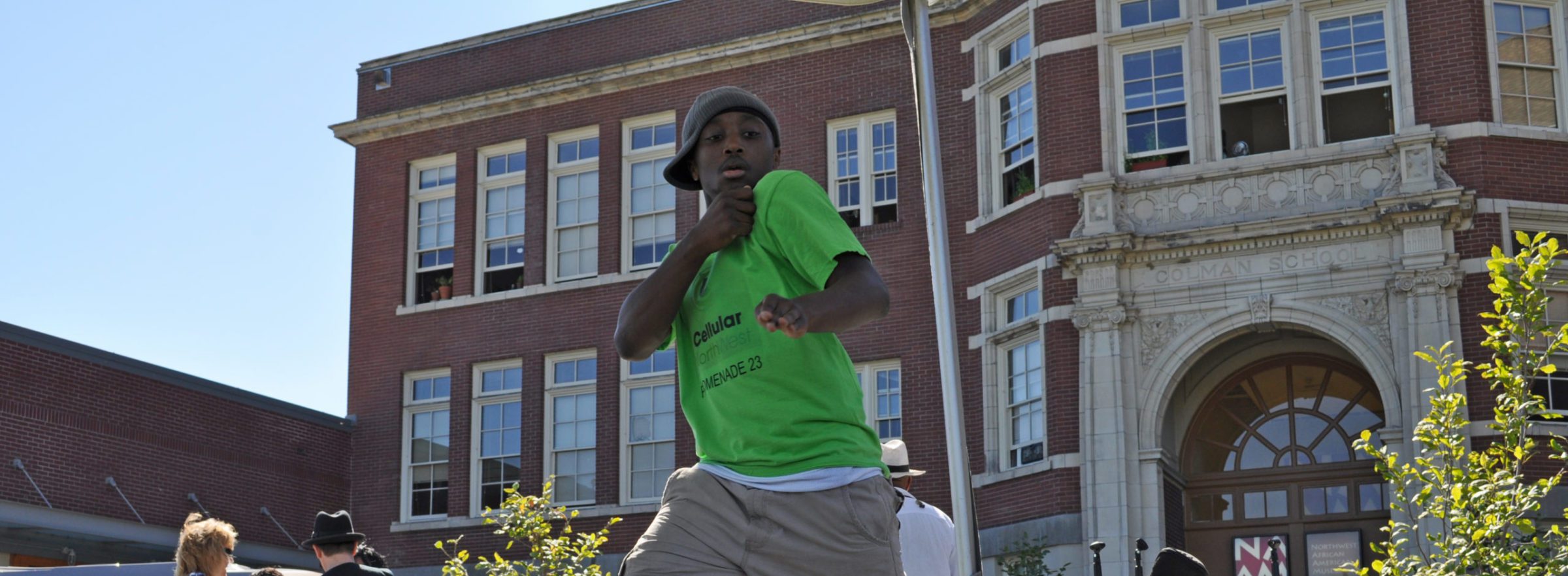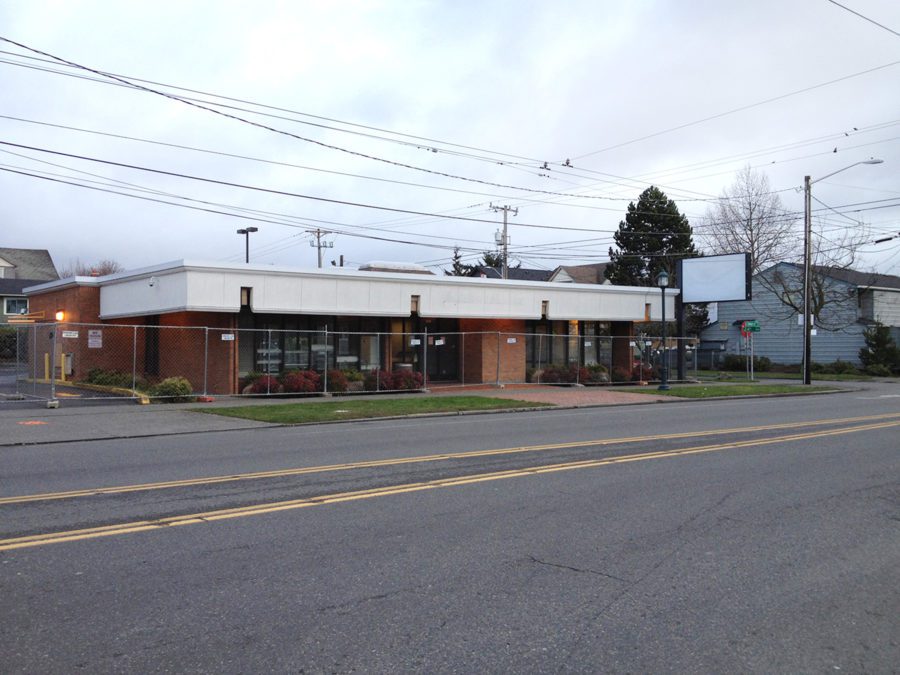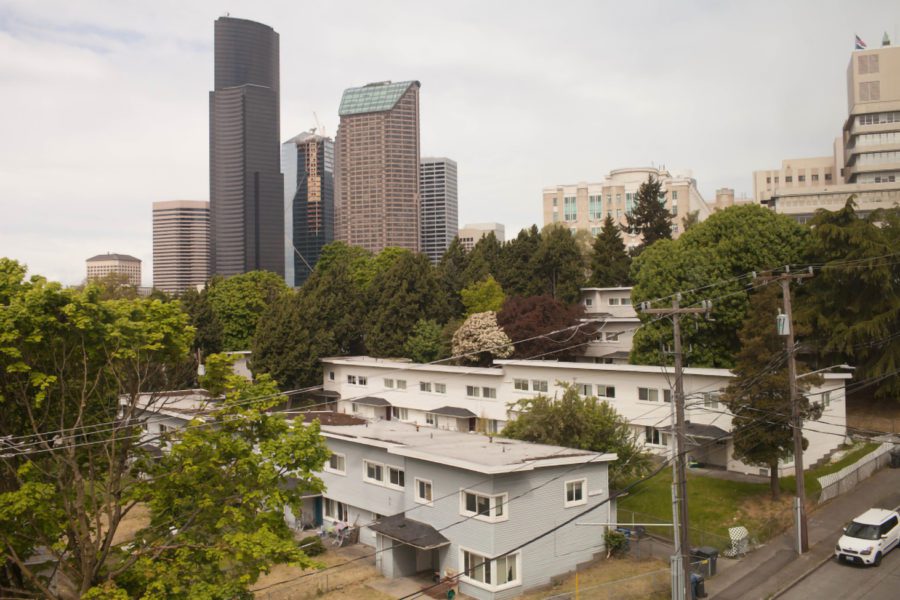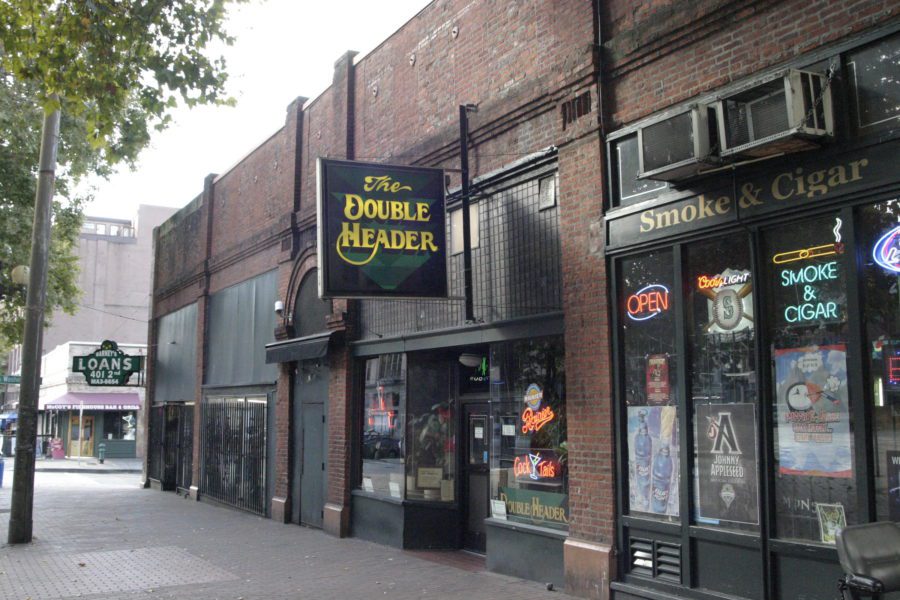Beyond Integrity: Shaping an equitable historic preservation practice

A hiphop dance troupe performing during the 2010 Pacific Northwest Black Community Festival at the Northwest African American Museum, the former Colman School. Photo from Joe Mabel.
By Manish Chaldana, Associate Professor of Urban Design and Planning, University of Washington; Beyond Integrity Working Group Member

The Liberty Bank Building in Seattle’s Central District before demolition. Photo from the Seattle Daily Journal of Commerce.
On February 5, 2014, the Seattle Landmarks Preservation Board voted to deny landmark designation to Liberty Bank by a close vote of 6-5. (The same board had voted unanimously in favor of nominating the building—an earlier step in the process—with 10-0 support a few weeks earlier.) The Liberty Bank was the first majority black-owned financial institution in the Pacific Northwest, located in Seattle’s historically redlined Central District. That neighborhood is now undergoing rapid gentrification. The bank’s location at 24th and Union, a prominent node that had been rezoned for additional density and mixed uses, put exceedingly high pressure on the site for redevelopment.
Built in 1968, the bank building was designed by a black architect, Mel Streeter, who is also credited for establishing the first black-owned architectural practice in Seattle. During its years of operation in the post-Civil Rights decades, the bank performed a central role in the economic and social life of the neighborhood; blacks could access financing that they were often denied elsewhere, to support neighborhood businesses and home ownership. The bank building itself, however, was a nondescript vernacular-modernist building without much curb appeal and had experienced some non-significant exterior changes in the five decades of its existence. The Landmarks Board denied landmark status to the building based primarily on its inability to convey its historic significance associated with social history. Other discussions hinged around façade modifications that may have compromised the building’s historic integrity.
Following the Landmark Board decision, the bank building was demolished in October 2015 to make room for a mixed-use apartment building. However, largely due to the efforts by Capitol Hill Housing and the Africatown Community Land Trust (a.k.a. “Africatown”), the Liberty Bank Building redevelopment has created affordable housing and prioritized black businesses in the new retail spaces. Additionally, site signage interprets the history of the Bank and the Central District. It can be argued, then, that even after the demise of the Bank building, the site is continuing to support the black population in the neighborhood that is fast dwindling (down from roughly 75% in the 1970s to under 15% today).
Regardless of the new building’s value, the Liberty Bank story illustrates one point: few sites associated with minority populations in Seattle have enjoyed much preservation success in their life or death. Their architecture, as well as their associational values, have often been undervalued and underappreciated in the landmarking process. A few have received token interpretation after demolition, but most have been lost without leaving many traces or opportunities for meaningful interpretation of minority histories, further “whitewashing” the historical record. This is particularly concerning as minority populations seldom had the agency or resources needed for creating buildings that would typically qualify for landmark status today.
Seattle’s criteria for nomination and designation of landmarks unfortunately encourage this outcome, as they favor sites associated with significant historic events, significant persons, distinctive architectural styles, outstanding works of designers, and prominent visual and spatial characteristics (Criteria A-F, respectively). Non-high styled sites associated with everyday folks find most of these difficult to meet by definition. In addition, such sites may have their visual and spatial characteristics or distinctive architecture styles compromised due to continuing everyday uses or deferred maintenance. This leaves only the broadly defined Criterion C—association with cultural, political, and economic heritage of city/state/nation—in support of landmarking such sites. However, in practice this criterion is mostly used in tandem with other criteria and seldom alone. This adds further challenge to an already uphill battle, resulting in disproportionate loss of sites associated with minorities.
In the wake of the demise of the Liberty Bank, a group of preservation professionals and advocates across King County got together to identify inequities in current preservation practice, particularly in the way historic sites associated with underrepresented minority communities get nominated and/or designated as landmarks. This group, named Beyond Integrity, has since focused on forging alliances across preservation organizations in King County and coordinating efforts to influence local decisionmakers to embrace new approaches to recognizing and managing history and memory from extant (and disappeared) historic sites. They focus on groups generally under-represented in historic preservation, including women, people of color, the LGBTQI community, and the working class.
Beyond Integrity strides to shape an equitable historic preservation practice that would generate a more representative historical record maintained as landmarks and promote new ways to interpret underrepresented minority histories. The group is spearheaded by 4Culture, the cultural funding agency for King County, which has also sponsored a summer intern since 2016 to further these efforts. The intern is selected from a national pool of applicants and works closely with the staff at 4Culture as well as a preservation consultant and University of Washington faculty member, themselves both members of the Beyond Integrity group. All members assist with scoping out work for the intern based on priority and need. The internship concludes with the intern presenting their findings to the larger group before finalizing their work in form of a report shared through the 4Culture website.

Yesler Terrace housing in 2017 before demolition. Photo from Matt Mills McKnight and Cascade Public Media.
In the last four years, significant strives have been made in understanding the range and variation of historic sites associated with underrepresented minority communities in King County. In addition to exploring this breadth, this ongoing effort has also achieved some depth with research at the site scale. This work can be time-consuming, as, on the one hand, the group faces the issue that “sometimes we do not know what we don’t know,” and on the other, relevant records are often not readily available or accessible.
- Yet in the last four years the group has obtained much greater clarity on the historic sites associated with underrepresented communities, whether they be recognized as landmarks or not. So far the specific focus of this work has been in the following intersecting areas:
- Distribution of sites and their association with underrepresented minority communities, particularly those that have been successfully designated as city landmarks
- Identifying sites associated with underrepresented minority communities that had successfully been nominated through the landmark process, but failed designation
- Identifying sites associated with underrepresented minority communities that have yet to be nominated
- Identifying landmarked sites that have different degrees of association with underrepresented minorities, but have not been recognized for that association, and how those records can be rectified/diversified
- Identifying how social and cultural significance is addressed in scoping survey/inventory work and how that has impacted sites associated with underrepresented groups
Some of the results are striking. Of Seattle’s more than 400 landmarks, only one mentions any connection to LGBTQI history—a dismal number given the city’s large population of sexual and gender minorities, its rich and nationally significant history for these communities, and its socially liberal identity. Until the designation of Licton Springs in 2019, there were no city landmarks associated with Native Americans (under 1% of city’s current population), who were the sole inhabitants of the area only 170 years ago and who maintain a strong cultural and demographic presence to this day. There are currently no city landmarks associated with Latinx groups (7% of Seattle’s current population). Some 4% of historical designated city landmarks are associated with blacks (who comprise 7% of Seattle’s current population); and 6% associated with Asian Americans (currently 15% of the population). These numbers are not very encouraging. In addition, the nomination and designation processes for many of the sites do not fully reveal the story behind the association with the minority communities.
We have likely lost many sites associated with underrepresented minority communities for which we have no records, as they were never picked up by any historical surveys or nominated for landmark status. We do, however, have records for those sites that were lost after they failed designation. Even then, we do not yet have a full list of the sites in this category, as records are opaque and often unavailable. For example, Yesler Terrace failed designation due largely to its loss of historic integrity, despite its rich social history as the first racially integrated public housing project in the nation. Some familiar examples in the category of sites associated with underrepresented minorities that have not yet been nominated for landmark status include three sites (two extant) associated with the Seattle chapter of the Black Panther Party as well as the home of William Grose, Seattle’s first permanent black settler, business owner, and early resident of Central District. Just these sites alone have the ability to clarify the African American history of Seattle to a great degree, yet they remain unprotected.

The Double Header Bar in Seattle’s Pioneer Square was thought to be the oldest gay bar in the country. It closed in 2015. Photo from Clint Lanier and Derek Hembree.
The already landmarked sites that do not clarify their association with underrepresented minority groups include the Pioneer Square Historic District. Even though its nomination has been amended three times since its inclusion in 1979, it continues to omit its layered queer history, even as it has been recognized as the first queer neighborhood of the city, with numerous extant sites, albeit with different current uses. Originally in this category was also the Colman School (designated 2005; now the Northwest African American Museum), a historically black school with a rich civil rights history surrounding school integration, boycott, and activism that is barely clarified in the landmark application. The school building was “occupied” by black activists for eight years (1985-1993) who demanded the site be used as an African American heritage museum and who were ultimately successful in their efforts. This association with Colman School site was researched by an intern, whose findings were detailed in a supplemental report provided to Seattle’s Historic Preservation Program for inclusion in the landmark file for the property. Such successful efforts at correcting the historical record offer a vision for how we can pursue a greater degree of clarity in understanding underrepresented minority association with historic sites.
Four years into this work, the Beyond Integrity group now has a better sense of the enormity of this effort and its various intersecting strands that could clarify the range and types of historic sites associated with underrepresented minority communities, including those that have been lost and others that remain unprotected and vulnerable. We are also interested in understanding biases in survey efforts and perhaps even in the landmarking process that particularly impact such sites. The group plans to continue with this work and share it with a national audience of preservationists with similar interests in building a more equitable preservation practice that moves away from investing limited resources in preserving sites associated with dominant groups at the cost of all others. As we learn from one another about all of our successes and challenges, we hope to build momentum that will allow more and more preservation agencies to commit fully to the task of diversifying the tangible historical record so that it matches better with the full breadth of past human experience.
